MyBatis日志管理与动态SQL
MyBatis日志管理
日志
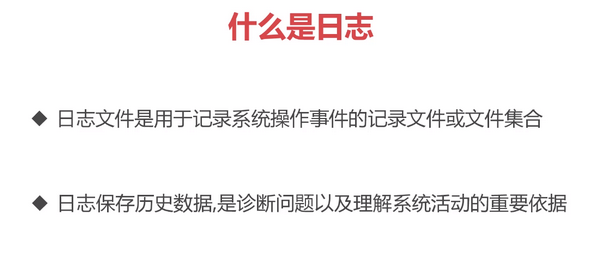
SLF4J与Logback
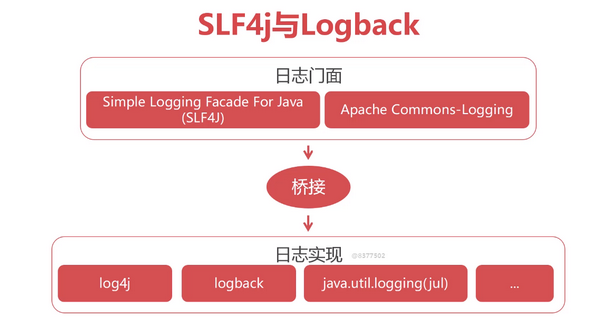
具体实现
<dependency>
<groupId>ch.qos.logback</groupId>
<artifactId>logback-classic</artifactId>
<version>1.2.3</version>
</dependency>
<?xml version="1.0" encoding="UTF-8" ?>
<configuration>
<appender name="console" class="ch.qos.logback.core.ConsoleAppender">
<encoder>
<pattern>%d{HH:mm:ss.SSS} [%thread] %-5level %logger{36} - %msg%n</pattern>
</encoder>
</appender>
<!--
日志输出级别(优先级高到低)
error: 错误 - 系统的故障日志
warn: 警告 - 存在风险或使用不当的日志
info: 一般性消息
debug: 程勋内部用户调试信息
trace: 程序运行的跟踪信息
-->
<root level="debug">
<appender-ref ref="console"/>
</root>
</configuration>
MyBatis动态SQL
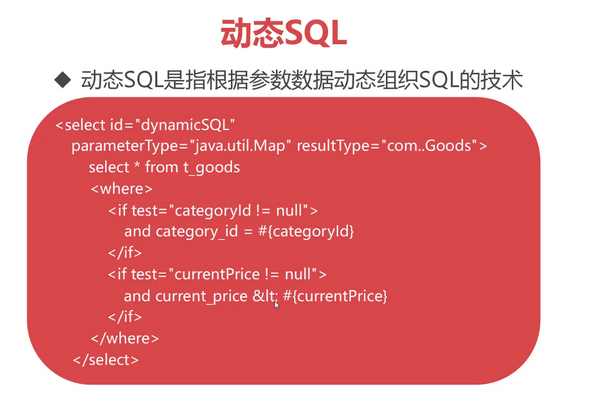
<select id="dynamicSQL" parameterType="java.util.Map" resultType="com.jesse.mybatis.entity.Goods">
SELECT * FROM t_goods
<where>
<if test="categoryId != null">
and category_id = #{categoryId}
</if>
<if test="currentPrice != null">
and current_price < #{currentPrice}
</if>
</where>
</select>
@Test
public void testDynamicSQL() throws Exception {
SqlSession session = null;
try{
session = MyBatisUtils.openSession();
Map param = new HashMap();
param.put("categoryId", 44);
param.put("currentPrice", 500);
//查询条件
List<Goods> list = session.selectList("goods.dynamicSQL", param);
for (Goods g:list){
System.out.println(g.getTitle() + ":" + g.getCategoryId() + ":" +
g.getCurrentPrice());
}
}catch (Exception e){
throw e;
}finally {
MyBatisUtils.closeSession(session);
}
}
MyBatis二级缓存
缓存
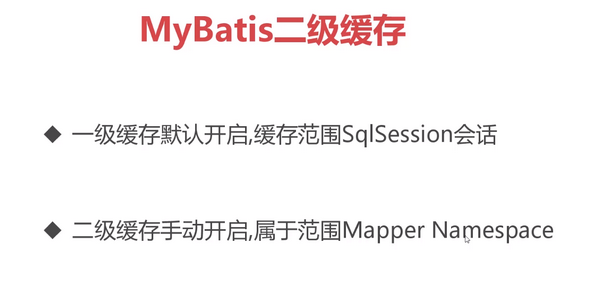
缓存范围
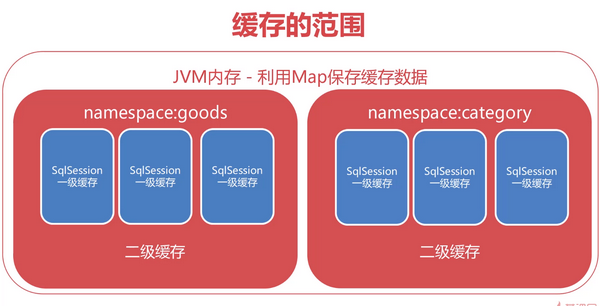
二级缓存运行规则
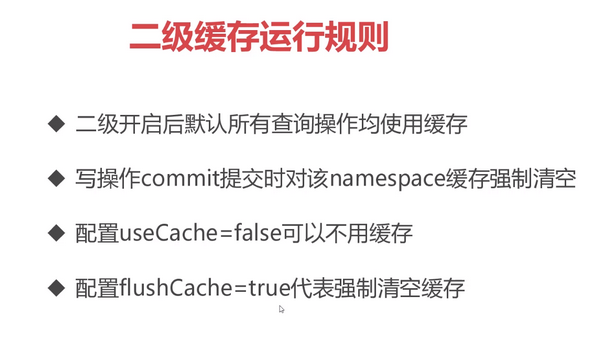
一级缓存测试
@Test
public void testLv1Cache() throws Exception {
SqlSession session = null;
try{
session = MyBatisUtils.openSession();
Goods goods = session.selectOne("goods.selectById", 1603);
Goods goods1 = session.selectOne("goods.selectById", 1603);
System.out.println(goods.hashCode() + ":" + goods1.hashCode());
System.out.println(goods.getTitle());
}catch (Exception e){
throw e;
}finally {
MyBatisUtils.closeSession(session);
}
try{
session = MyBatisUtils.openSession();
Goods goods = session.selectOne("goods.selectById", 1603);
session.commit();//commit提交时对该namespace缓存强制清空
Goods goods1 = session.selectOne("goods.selectById", 1603);
System.out.println(goods.hashCode() + ":" + goods1.hashCode());
System.out.println(goods.getTitle());
}catch (Exception e){
throw e;
}finally {
MyBatisUtils.closeSession(session);
}
}
二级缓存测试
<!--开启二级缓存
eviction 是缓存的清除策略,当缓存对象数量达到上限后,自动触发对应算法对缓存对象清除
1. LRU - 最近最少使用的:移除最长时间不被使用的对象
2. FIFO - 先进先出:按对象进入缓存的顺序来移除他们
3. SOFT - 软引用:移除基于垃圾回收器状态和软引用规则的对象
4. WEAK - 弱引用:更积极地移除基于垃圾回收器状态和弱引用规则的对象
flushInterval 代表间隔多长时间自动清空缓存,单位毫秒,600000毫秒 = 10分钟
size 缓存存储上限,用于保存对象或集合(1个集合是一个对象)的数量上限
readOnly 设置为true,代表返回只读缓存,每次从缓存取出的是缓存对象本省,这种执行效率较高
设置为false, 代表每次取出的是缓存对象的"副本",每次取出的对象是不同的,这种安全性较高
-->
<cache eviction="LRU" flushInterval="600000" size="512" readOnly="true"/>
@Test
public void testLv2Cache() throws Exception {
SqlSession session = null;
try{
session = MyBatisUtils.openSession();
Goods goods = session.selectOne("goods.selectById", 1603);
System.out.println(goods.hashCode());
}catch (Exception e){
throw e;
}finally {
MyBatisUtils.closeSession(session);
}
try{
session = MyBatisUtils.openSession();
Goods goods = session.selectOne("goods.selectById", 1603);
System.out.println(goods.hashCode());
}catch (Exception e){
throw e;
}finally {
MyBatisUtils.closeSession(session);
}
}
MyBatis多表级联查询
- 多表关联查询:两个表通过主外键,在一条SQL语句,完成所有数据的提取
- 多表级联查询:通过一个对象,获得与它关联的另一个对象,执行多条SQL语句
常见实体关系

OneToMany对象级联查询
package com.jesse.mybatis.entity;
import java.util.List;
public class Goods {
private Integer goodsId;
private String title;
private String subTitle;
private Float originalCost;
private Float currentPrice;
private Float discount;
private Integer isFreeDelivery;
private Integer categoryId;
private List<GoodsDetail> goodsDetails;
public Integer getGoodsId() {
return goodsId;
}
public void setGoodsId(Integer goodsId) {
this.goodsId = goodsId;
}
public String getTitle() {
return title;
}
public void setTitle(String title) {
this.title = title;
}
public String getSubTitle() {
return subTitle;
}
public void setSubTitle(String subTitle) {
this.subTitle = subTitle;
}
public Float getOriginalCost() {
return originalCost;
}
public void setOriginalCost(Float originalCost) {
this.originalCost = originalCost;
}
public Float getCurrentPrice() {
return currentPrice;
}
public void setCurrentPrice(Float currentPrice) {
this.currentPrice = currentPrice;
}
public Float getDiscount() {
return discount;
}
public void setDiscount(Float discount) {
this.discount = discount;
}
public Integer getIsFreeDelivery() {
return isFreeDelivery;
}
public void setIsFreeDelivery(Integer isFreeDelivery) {
this.isFreeDelivery = isFreeDelivery;
}
public Integer getCategoryId() {
return categoryId;
}
public void setCategoryId(Integer categoryId) {
this.categoryId = categoryId;
}
public List<GoodsDetail> getGoodsDetails() {
return goodsDetails;
}
public void setGoodsDetails(List<GoodsDetail> goodsDetails) {
this.goodsDetails = goodsDetails;
}
}
<mappers>
<mapper resource="mappers/goods.xml"/>
<mapper resource="mappers/goods_detail.xml"/>
</mappers>
<?xml version="1.0" encoding="UTF-8" ?>
<!DOCTYPE mapper
PUBLIC "-//mybatis.org//DTD Mapper 3.0//EN"
"http://mybatis.org/dtd/mybatis-3-mapper.dtd">
<mapper namespace="goodsDetail">
<select id="selectByGoodsId" parameterType="Integer"
resultType="com.jesse.mybatis.entity.GoodsDetail">
SELECT * FROM t_goods_detail WHERE goods_id = #{value}
</select>
</mapper>
<!--
resultMap可用于说明一对多或者多对一的映射逻辑
id 是resultMap属性引用的标志
type 指向One的实体(Goods)
-->
<resultMap id="rmGoods1" type="com.jesse.mybatis.entity.Goods">
<!--映射goods对象的主键到goods_id字段-->
<id column="goods_id" property="goodsId"></id>
<!--
collection的含义是,在
SELECT * FROM t_goods LIMIT 0,1 得到结果后,对所有Goods对象遍历得到goods_id字段
并代入到goodsDetail命名空间的selectByGoodsId的SQL中执行查询,
将得到的"商品详情"集合赋值给goodsDetails List对象。
-->
<collection column="goods_id" property="goodsDetails"
select="goodsDetail.selectByGoodsId"/>
</resultMap>
<select id="selectOneToMany" resultMap="rmGoods1">
SELECT * FROM t_goods LIMIT 0,1
</select>
@Test
public void testOneToMany() throws Exception {
SqlSession session = null;
try{
session = MyBatisUtils.openSession();
List<Goods> list = session.selectList("goods.selectOneToMany");
for (Goods goods : list) {
System.out.println(goods.getTitle() + ":" + goods.getGoodsDetails().size());
}
}catch (Exception e){
throw e;
}finally {
MyBatisUtils.closeSession(session);
}
}
ManyToOne对象级联查询
<resultMap id="rmGoodsDetail" type="com.jesse.mybatis.entity.GoodsDetail">
<id column="gd_id" property="gdId"/>
<result column="goods_id" property="goodsId"/>
<association column="goods_id" property="goods" select="goods.selectById"></association>
</resultMap>
<select id="selectManyToOne" resultMap="rmGoodsDetail">
SELECT * FROM t_goods_detail LIMIT 0,20
</select>
<select id="selectById" parameterType="Integer" resultType="com.jesse.mybatis.entity.Goods">
SELECT * FROM t_goods WHERE goods_id = #{value}
</select>
@Test
public void testManyToOne() throws Exception {
SqlSession session = null;
try{
session = MyBatisUtils.openSession();
List<GoodsDetail> list = session.selectList("goodsDetail.selectManyToOne");
for (GoodsDetail gd : list) {
System.out.println(gd.getGdPicUrl() + ":" + gd.getGoods().getTitle());
}
}catch (Exception e){
throw e;
}finally {
MyBatisUtils.closeSession(session);
}
}
PageHelper分页插件
分页查询的麻烦事
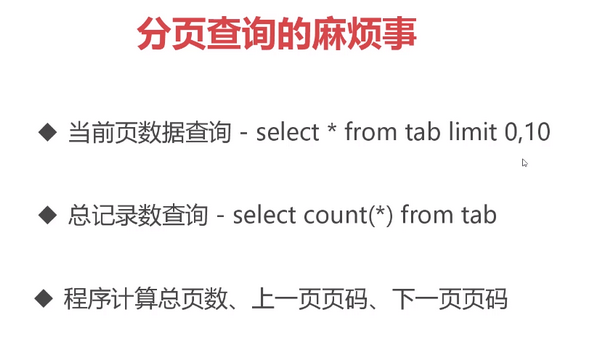
PageHelper使用流程
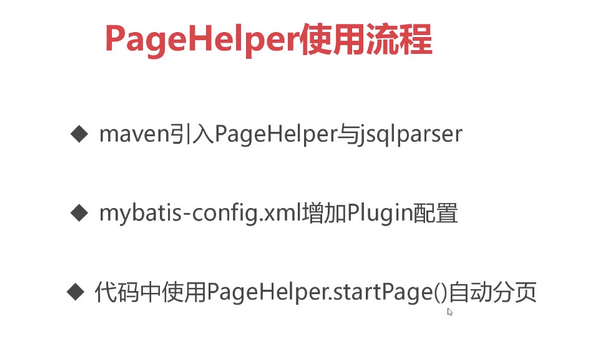
mysql实现
<dependency>
<groupId>com.github.pagehelper</groupId>
<artifactId>pagehelper</artifactId>
<version>5.1.10</version>
</dependency>
<dependency>
<groupId>com.github.jsqlparser</groupId>
<artifactId>jsqlparser</artifactId>
<version>2.0</version>
</dependency>
<!--启用Pagehelper分页插件-->
<plugins>
<plugin interceptor="com.github.pagehelper.PageInterceptor">
<!--设置数据库类型-->
<property name="helperDialect" value="mysql"/>
<!--分页合理化-->
<property name="reasonable" value="true"/>
</plugin>
</plugins>
<select id="selectPage" resultType="com.jesse.mybatis.entity.Goods">
SELECT * FROM t_goods WHERE current_price < 1000
</select>
@Test
public void testSelectPage() throws Exception {
SqlSession session = null;
try{
session = MyBatisUtils.openSession();
//startPage方法会自动将下一次查询进行分页
PageHelper.startPage(2,10);
Page<Goods> page = (Page)session.selectList("goods.selectPage");
System.out.println("总页数:" + page.getPages());
System.out.println("总记录数:" + page.getTotal());
System.out.println("开始行号:" + page.getStartRow());
System.out.println("结束行号:" + page.getEndRow());
System.out.println("当前页码:" + page.getPageNum());
List<Goods> data = page.getResult();//当前页数据
for (Goods g : data) {
System.out.println(g.getTitle());
}
}catch (Exception e){
throw e;
}finally {
MyBatisUtils.closeSession(session);
}
}
不同数据库的分页实现原理
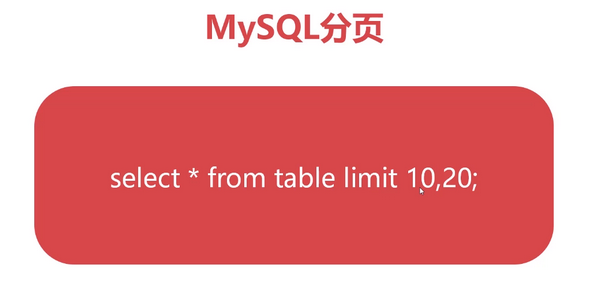
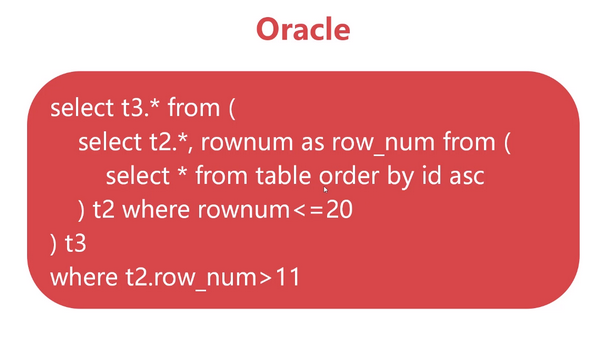
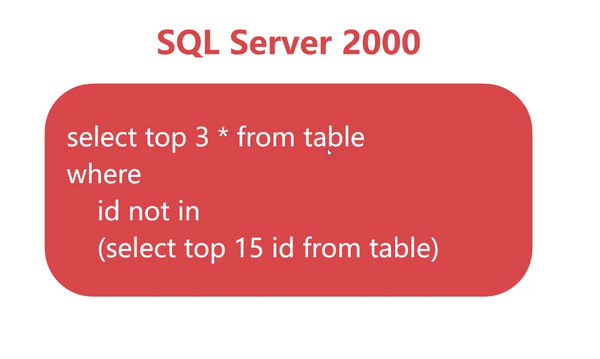
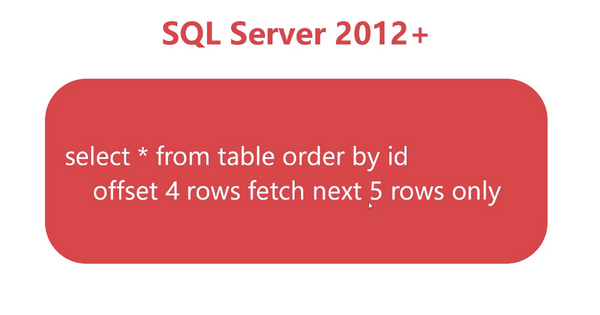
MyBatis整合C3P0连接池
<dependency>
<groupId>com.mchange</groupId>
<artifactId>c3p0</artifactId>
<version>0.9.5.4</version>
</dependency>
package com.jesse.mybatis.datasource;
import com.mchange.v2.c3p0.ComboPooledDataSource;
import org.apache.ibatis.datasource.unpooled.UnpooledDataSourceFactory;
//C3P0与MyBatis兼容使用的数据源工厂
public class C3P0DataSourceFactory extends UnpooledDataSourceFactory {
public C3P0DataSourceFactory() {
this.dataSource = new ComboPooledDataSource();
}
}
<!--设置默认指向的数据库-->
<environments default="dev">
<!--配置环境,不同的环境不同的id名字-->
<environment id="dev">
<!--采用JDBC方式对数据库事务进行commit/rollback-->
<transactionManager type="JDBC"></transactionManager>
<!--采用连接池方式管理数据库连接-->
<!--<dataSource type="POOLED">-->
<dataSource type="com.jesse.mybatis.datasource.C3P0DataSourceFactory">
<property name="driverClass" value="com.mysql.cj.jdbc.Driver"/>
<property name="jdbcUrl" value="jdbc:mysql://localhost:3306/babytun?useUnicode=true&characterEncoding=UTF-8&useJDBCCompliantTimezoneShift=true&useLegacyDatetimeCode=false&serverTimezone=UTC"/>
<property name="user" value="root"/>
<property name="password" value="1234"/>
<property name="initialPoolSize" value="5"/>
<property name="maxPoolSize" value="20"/>
<property name="minPoolSize" value="5"/>
</dataSource>
</environment>
</environments>
MyBatis批处理
批量增加
<!--
INSERT INTO table
VALUES ("a", "a1", "a2"),("b", "b1", "b2"),(....)
局限:
1、无法获得插入数据的id
2、批量生成的SQL太长,可能会被服务器拒绝
-->
<insert id="batchInsert" parameterType="java.util.List">
INSERT INTO t_goods(title, sub_title, original_cost, current_price, discount, is_free_delivery, category_id)
VALUES
<foreach collection="list" item="item" index="index" separator=",">
(#{item.title}, #{item.subTitle}, #{item.originalCost}, #{item.currentPrice}, #{item.discount}, #{item.isFreeDelivery}, #{item.categoryId})
</foreach>
</insert>
@Test
public void testBatchInsert() throws Exception {
SqlSession session = null;
try{
long st = new Date().getTime();
session = MyBatisUtils.openSession();
List list = new ArrayList();
for (int i = 0; i < 10000; i++) {
Goods goods = new Goods();
goods.setTitle("测试商品");
goods.setSubTitle("测试子标题");
goods.setOriginalCost(200f);
goods.setCurrentPrice(100f);
goods.setDiscount(0.5f);
goods.setIsFreeDelivery(1);
goods.setCategoryId(43);
list.add(goods);
}
session.insert("goods.batchInsert", list);
session.commit();//提交事务数据
long et = new Date().getTime();
System.out.println("执行时间:" + (et -st) + "毫秒");
}catch (Exception e){
if (session != null){
session.rollback();//回滚事务
}
throw e;
}finally {
MyBatisUtils.closeSession(session);
}
}
批量删除
<delete id="batchDelete" parameterType="java.util.List">
DELETE FROM t_goods WHERE goods_id in
<foreach collection="list" item="item" index="index" open="(" close=")" separator=",">
#{item}
</foreach>
</delete>
@Test
public void testBatchDelete() throws Exception {
SqlSession session = null;
try{
long st = new Date().getTime();
session = MyBatisUtils.openSession();
List list = new ArrayList();
list.add(1920);
list.add(1921);
list.add(1922);
session.delete("goods.batchDelete", list);
session.commit();//提交事务数据
long et = new Date().getTime();
System.out.println("执行时间:" + (et -st) + "毫秒");
}catch (Exception e){
if (session != null){
session.rollback();//回滚事务
}
throw e;
}finally {
MyBatisUtils.closeSession(session);
}
}
MaBatis注解开发方式(略)















 浙公网安备 33010602011771号
浙公网安备 33010602011771号